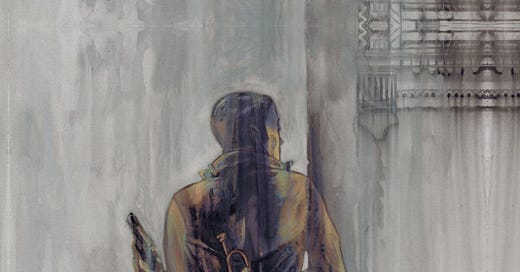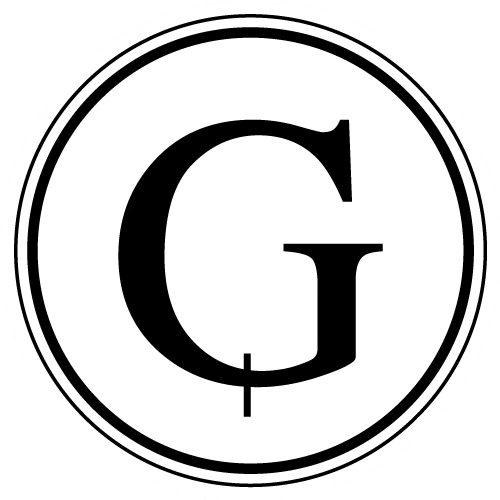What follows is Part 11 of Becoming P.T. Lyfantod
If you missed Part 1, start there:
I hadn’t counted on that. Perhaps I should have, the way things had been going lately. Feeling aimless, I wandered, leery of parked cars. Eventually I decided what I needed was somewhere private to give the book another look. Maybe it would provide some clue to what the hell was going on. I settled on Singleton Park. Nothing interesting ever happened there, and I’d be able to see anyone trying to sneak up on me. The park spread out next to the school, now quiet and empty at its northwest corner. It was a hilly expanse of grass and trees, under one of which I sat, tossing my rucksack down beside me. The damp ground was scattered with red and yellow leaves, and though the seat of my trousers soaked through in a matter of moments, I was too preoccupied to notice.
Unzipping my bag, I took out the book to examine in daylight. It didn’t look special. It looked like a… library book. From the stuffy typeface, to the colorless photo on the front, to the dry description on the back, it felt exactly like the sort of book I’d be assigned for homework. The sort of book in which nothing exciting happened, and people talked for far too long about topics that were of no interest to anybody. In a word, dull. Except for the title. Old Magick in Modern Britain. Certainly not the most sensational thing I’d ever read, but anything involving magic would at least catch my attention. And spelling it with a k—that did appeal to my sensibilities. Nevertheless, if I’d happened upon it naturally, I probably wouldn’t have given it a second glance. My instincts told me that nothing so… well, nothing likely to be found in a used bookshop could possibly have anything to do with real magic. Such books were certain to be examinations of old pottery, or folktales, or things of that sort. But in spite of the book’s outward mundaneness, the strange series of events that had brought it to me made me feel I might just be holding something that was more than it appeared. The man in green was, I was certain of that. Which meant anything to do with him deserved special care and attention. If my mother hadn’t shown up when she did, I never would’ve left the book on that shelf. Not after he’d practically handed it to me. What had possessed her to buy it? A bribe, most likely. Bribes were a favorite tactic of hers—though for much of my life, I’d mistaken them for gifts. She’d seen me looking at the book, supposed I wanted it, and decided it wasn’t a bad way to spend three quid if it got her a house somewhere down the line. It seemed a halfhearted gesture. If she’d really wanted to bring me around to her side, surely something more expensive would’ve made more sense, at least from her perspective. She couldn’t know about the connection to the man in green.
It might’ve been sheer dumb luck. It might’ve been coincidence. But what if it was something else? What if I was meant to have it? What if—like Bilbo’s ring—the book had a mind of its own? It certainly didn’t look enchanted. Where was the leather binding? The arcane sigils, embossed in gold? Was this how books of magic—magick?—looked in the twentieth century? If so, it was an effective disguise. I gave a surreptitious glance around the park and slid it open. The spine creaked, and I found myself on that inscrutable legal page which sits at the front of all books, with no clear purpose except to be skipped over. I scanned it for cryptic messages, calling out to the watchful observer…but after several minutes I found nothing.
The tip of my forefinger hissed softly as it ran down the table of contents, whose numerous entries had no discernible organizational scheme, all as painfully academic-sounding as the cover suggested. I was a quarter of the way through the list before I came across a title that made me pause:
Identifying the Green Man - Essay… 103
“The Green Man?”
But as I lay my thumb against the outer edge to find the page, the book fell open of its own accord—to a page marked by a short length of green ribbon. I slammed the book shut with a gasp and leapt to my feet, eyes roving. He was toying with me! I was sure I’d see him watching me from some distant path, peering from behind a tree. But there was no sign of the man in green.
Reluctantly, I sat and opened the book once more. Separate entries lay on either side of the ribbon, printed in text so small I had to hold the book under my nose to read them:
Frogs, Toads, and Transformations (excerpt from an article written for Magic & Mysticism, Mar., 1960); and Tuatha Dé Danann: Where Gone, the People of the Mounds? (short essay, originally anthologized in Béaloideas na hÉireann, Revisited, Eileen Ennis, editor, 1963).
I frowned. Which page the ribbon was indicating?
I had no idea what Tuatha Dé Danann meant, except that it sounded vaguely Irish. But frogs and toads are green, I thought. Perhaps that’s the key. Squinting, I began to read.
I was asked to introduce the readers of this fine publication to a topic in the realm of the esoteric I found both rich and underrepresented in the modern discourse. Let me begin by noting that there is a particular view of the weird and mysterious prevalent in the West today. A curious mix of Christian and Anti-Christian theology, pagan ritual, and a yearning desire to commune with so-called “higher powers,” heavily influenced by men like Aleister Crowley and his contemporaries—evidenced even in the title of this very journal, which of course holds no affiliation with Crowley or his Thelemites.
I submit that this occult perspective is unique to our time, and for all that it draws upon ancient traditions, it also displays a manifest lack of understanding of what the pre-modern world was truly like. For all of our attempts to summon angels to bless us and demons to dash our enemies, we’ve forgotten that once upon a time, wondrous beings went among us as naturally as bees among flowers. This I shall illustrate with an unlikely example: the anurans108—that is, frogs, toads, and their kin.
Now, I know what you’re going to say. Frogs and toads are good for two things—witches’ brews and plagues. And possibly French cuisine. In fairness, this view is the one most people now hold. But I stress that it is a mistaken one. Much has been said of the anurans in their many forms, in British myth and oral tradition, as well as others, and I believe that they’ve played a far greater role in the history of these isles than we imagine, and perhaps still do.
Ever since the Gregorian mission in the seventh century, Great Britain has leaned heavily on Christian doctrine—and yet even today, over a dozen centuries later, there are those who, some unknowingly, some not, still practice customs first conceived in order to live harmoniously with the native spirits of this land: observance of Beltane, and Summer Solstice; Samhain and Hallowe’en; the careful preservation of Hawthorn trees and fairy hills by practitioners of Creideamh Sí;109 the reverence afforded wells, springs, and other natural features, or the vague belief that they bring good luck.
In the same sort of stories in which we first hear tell of these practices, or their precursors, are accounts of extraordinary frogs and toads. One account dated as recently as the late 1600s recalls a toad as big as a cart-horse, encountered one night on a less traveled road in the rural areas of Gloucester. Yet another, attributed to Wilfred de Lyndsay110, a 13th century knight, gives tell of a creature so enormous it was originally mistaken for a large hill. De Lyndsay recounts discovering his mistake only after climbing to the top and observing that it began to move. He attests that in a single night, unable to dismount for fear of being trampled, he was transported from modern day Swindon all the way to the Black Mountains110 in Wales.
The geographic concentration of these events leads many to believe that at least one of the anuran kingdoms may be located somewhere west of the Welsh border. ‘Kingdoms?’ you say. ‘Indeed,’ say I. Or have you forgotten the most famous frog-related tale of them all: The Frog Prince?
It is a tale repeated often enough to have been identified in the Aarne-Thompson-Uther Index111 of folktale types (number 440, to be exact). Versions of the tale, in which a frog transforms by magic into a prince, or sometimes princess, and brings good fortune to those who’ve treated it well (or granted its wishes) are speculated to date back at least to Roman times, and can be found in German, English, Scottish, Russian, even Korean and Chinese traditions.
How does the old saying go? ‘Where there’s smoke, there’s fire?’ You can quite plainly see the smoke. I know the readers of this fine publication know better than to dismiss a wealth of evidence spanning five cultures, thousands of years, and two continents. And for there to be a Frog Prince, there must, of necessity, be a King to sire him. If there is a King, there is no doubt a Kingdom.
Though such a kingdom has never been given name as far as I know, a priori reasoning dictates that somewhere, somewhen, it must exist. And these recurring incursions into human life throughout history suggest the anurans have at least some interest in our kind. Somehow we’ve lost touch, and I would not be surprised if it had to do with our own modern sensibilities, which have cost us greatly, as I’m sure many of you will agree.
I have not heard any reliable stories of frogs transforming into men in my lifetime, but their ability to assume human form means they may yet walk among us, entirely unsuspected. Waiting, perhaps, for the right man or woman to pull back the veil once again, and reap the rewards. I, for one, find the possibility thrilling.
So I challenge you, dear reader. Do your own research. Starting, perhaps with the old folktales (many of which are discussed at length in this very journal). Seek them out—the frogs and toads who are more than they seem. And should you happen to discover one, I know we would all love to hear about it.
I closed the book, marking the page with my finger. Giant frogs? Frog princes? This was what the man in green wanted me to see? I’d read the story of the frog prince at some point. In a collection of Grimm’s fairytales, maybe. Did he want me to go around kissing frogs and toads until one of them turned into a person? Did even want a toad princess if I got one? Unless…
Unless he was a frog wearing human skin?
I entertained the thought for all of thirty seconds before I snorted and shook my head.“It would explain all the green.” I sighed, staring out at the gently rolling hills of Singleton Park and tried to imagine mistaking one of them for a frog. It was pretty hard to do. Maybe if the frog was lying down… and covered with grass and dirt. But these hills had been there for as long as I could remember. Unless the frog was either very patient, or in some kind of hibernation, I’d have to look elsewhere. “Note to self. Keep an eye out for hills that weren’t there the day before.” Time to see what was on the second page.







